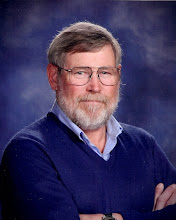How many of you can remember your life 50 years ago? Of course that assumes that you are older that 50 years old! I remember 1959 very well. That year we moved to the Kalama Falls State Salmon Hatchery.
When I was born, my dad was working at Puget Sound Naval Shipyard in Bremerton, WA. Due to flucuations in the workload at the shipyard, my dad's job was in jeopardy of being eliminated. So, in the mid 1950's, he took a job working for the State of Washington Department of Fisheries. His first post was at the Green River Hatchery in Auburn, Wa. In 1959 he was reassigned to the Kalama Falls hatchery. Kalama was (and still is) a small town on I-5 about 30 miles north of Portland, Or. The Kalama River empties in to the Columbia River about two miles downstream of the town of Kalama. The hatchery was located about nine miles up the river on a very rough gravel road. In 1959, the area was very remote and isolated.
The Kalama Falls hatchery was finished in 1959 and my dad was part of the first crew to operate the hatchery. We were the first family to live in our house on the hatchery. This was a great place for kids to live in and my sister, neighbors kids and I were always playing in the forest.
We lived on the hatchery for two years until 1961 when my dad returned to Bremerton and once again went to work for the shipyard.
Today my folks and I drove back to Kalama to see the hatchery and the town. This was the first time since my dad quit that they had been back to the hatchery, I had been back in 1985. The hatchery remains much the same except for the four missing houses. Three new houses have been built on the hill above the hatchery. It was neat driving up the river road. It is now paved and even though much has changed, much is similar and I could recognize a lot.
We went into the town and drove by my old elementry school. It looks alot like it did in 1959 and I could pick out my old classroom.

The hatchery was built in the bend of the river on a plain that records showed had not been flooded in 100 years. That was until 1996 when record floods flooded the five houses built along the river. Only one remains today.

The main hatchery building. Inside were store rooms, work rooms and the incubator room where the eggs were hatched.

The ponds where returning salmon are held prior to spawning and young salmon are held until they are mature enough to be released to the river.

This is the only house remaining of the five built in 1959. My family was the first to live in this house. The window visible behind the cars was my bedroom.

This was our home on the hatchery. The river was right behind the house. These houses were concrete block construction and were pretty nice for that era.

In dowtown Kalama, this used to be the church that we attended. It is now an antique store. Looks a lot better now than in 1959.




















